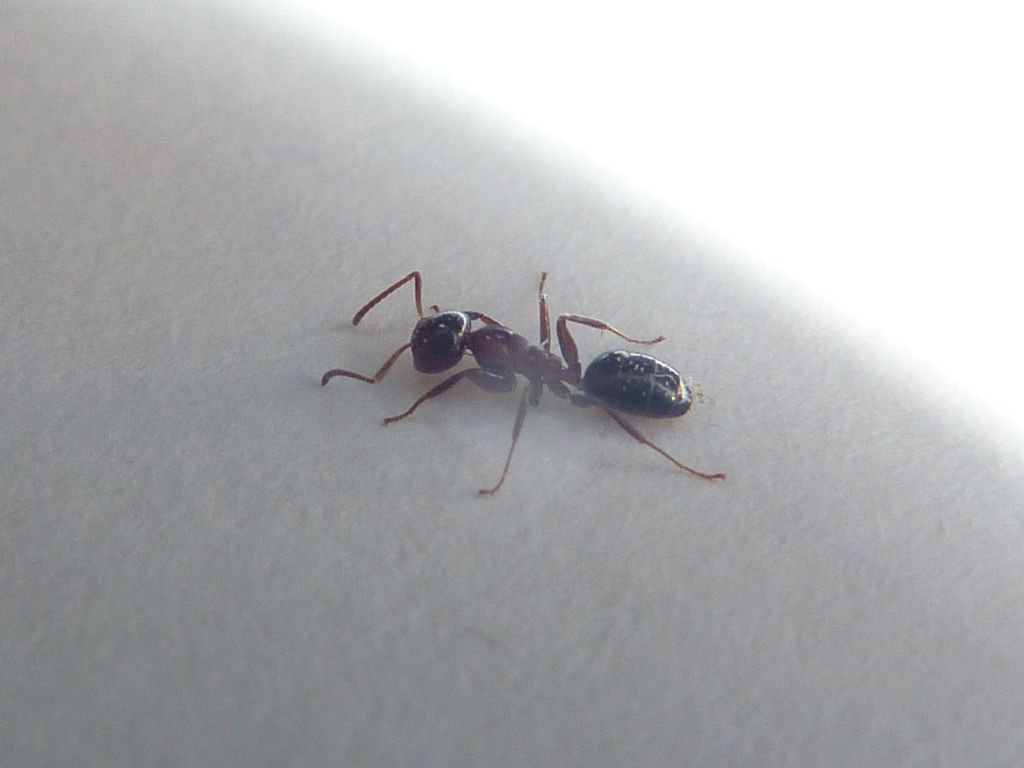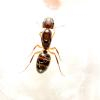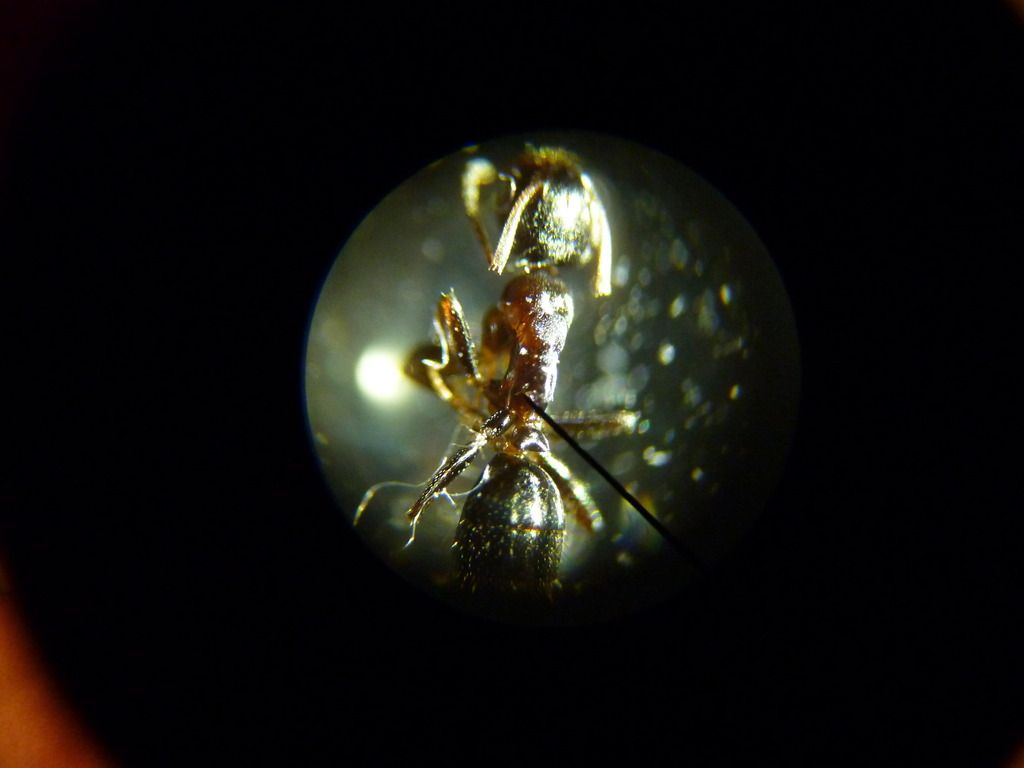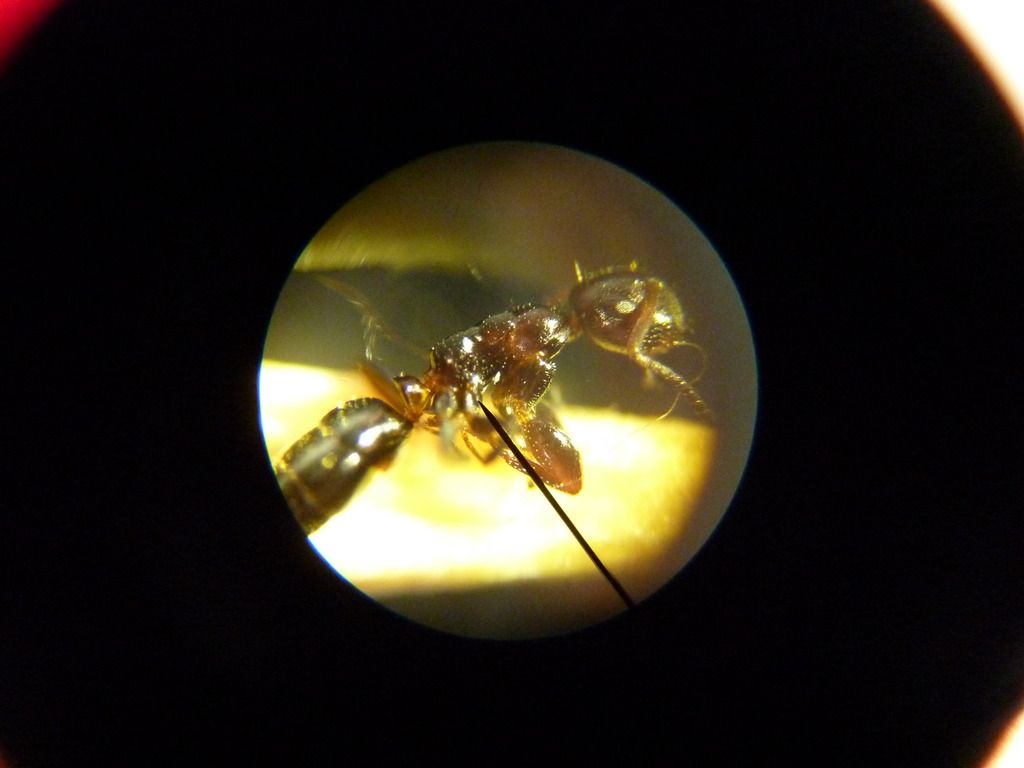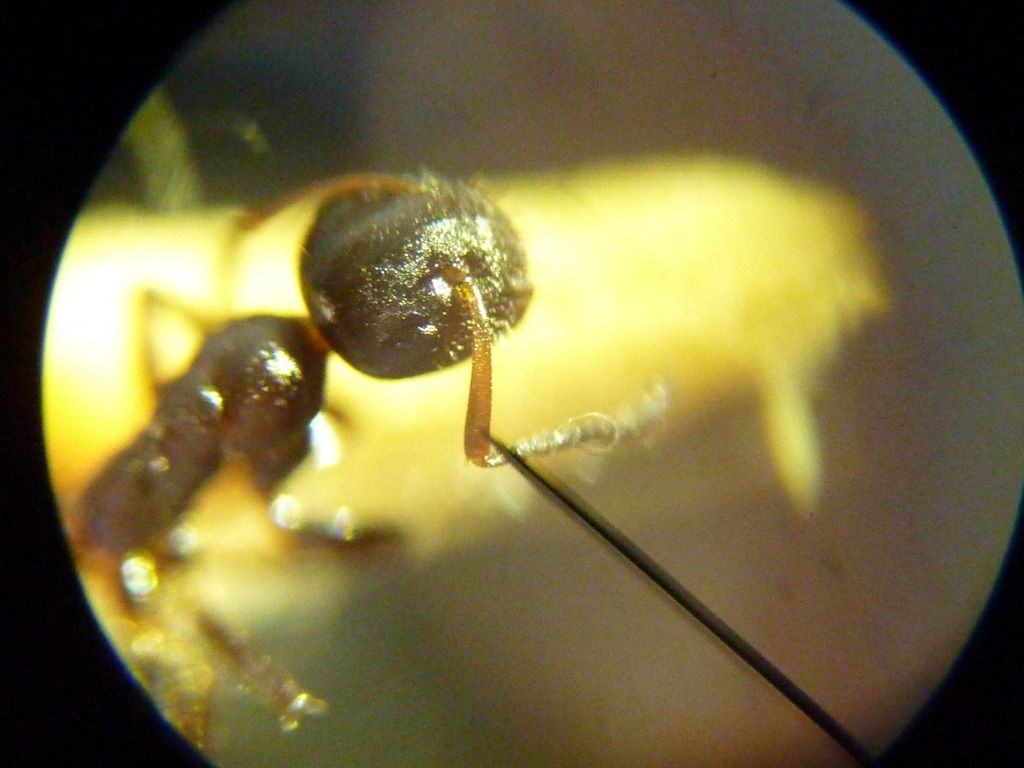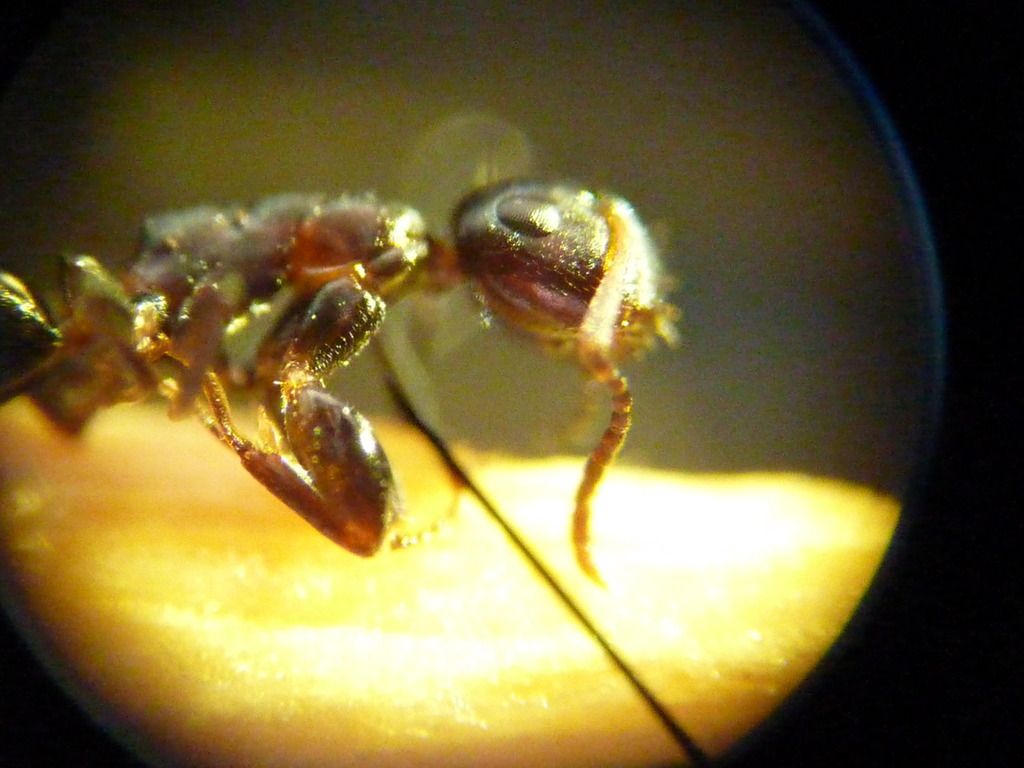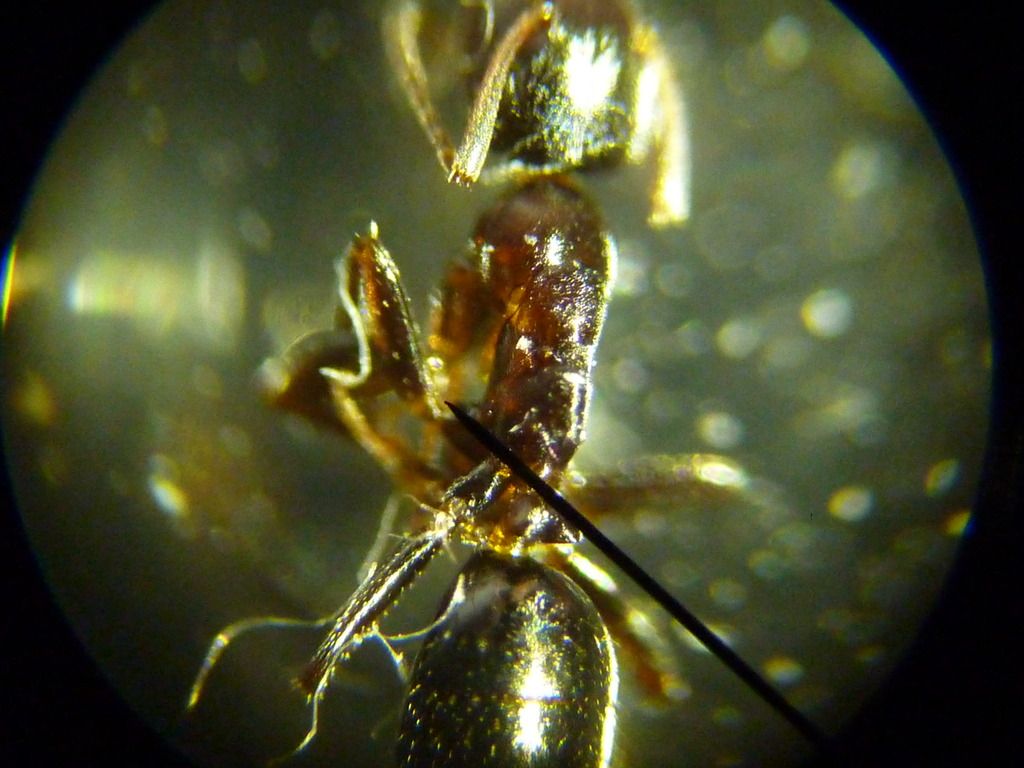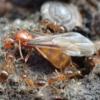Worker One:
1. Location of collection: Horsham, PA: Suburb of Greater Philadelphia.
2. Date of collection: May 16, 2017.
3. Habitat of collection: Caught foraging around the base of a (presumably) dead tree.
4. Length (from head to gaster): Approximately 3.4-3.9 mm.
5. Color, hue, pattern and texture: Reddish/brown head & mesosoma with a shiny, dark gaster.
6. Distinguishing characteristics: Post-petiole Absent
7. Distinguishing behavior: Simply stood still, twitching her legs individually, approx. 5-7 minutes after she was taken from the fridge.
8. Nest description: NA
Notes: At first I though this was a smaller C. caryae or C. nearcticus worker, which have been known and documented to exist in the vicinity this specimen was collected from; although her segmented and not "curved" mesosoma eliminates Camponotus; she may be a smaller Formica species.
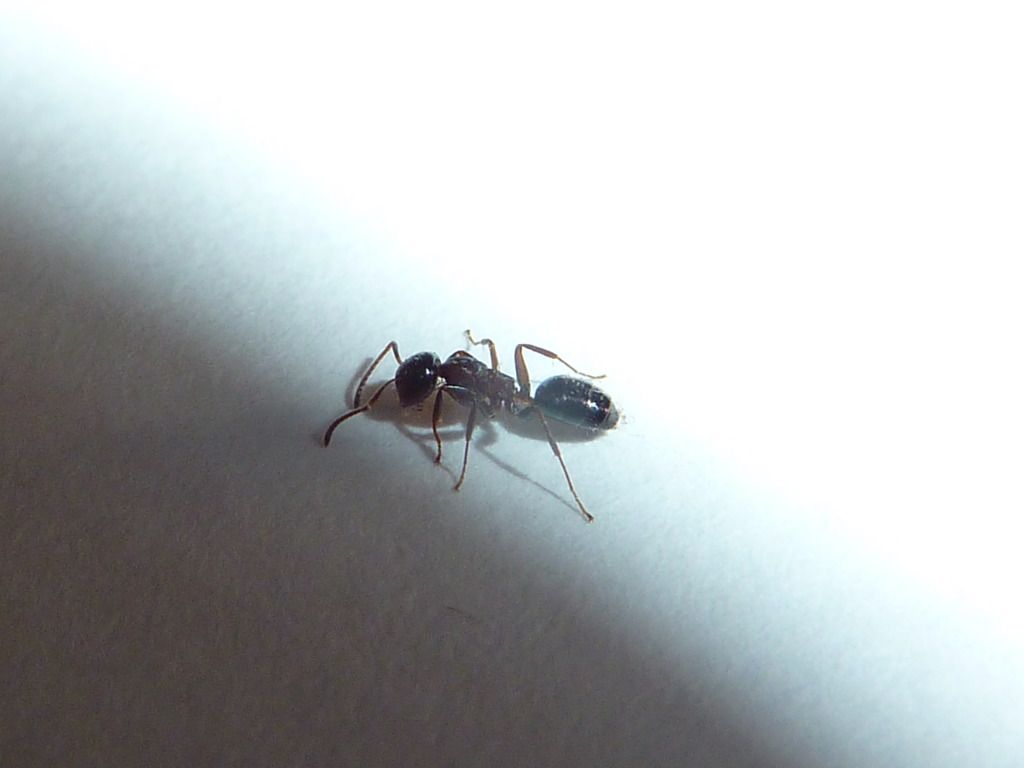


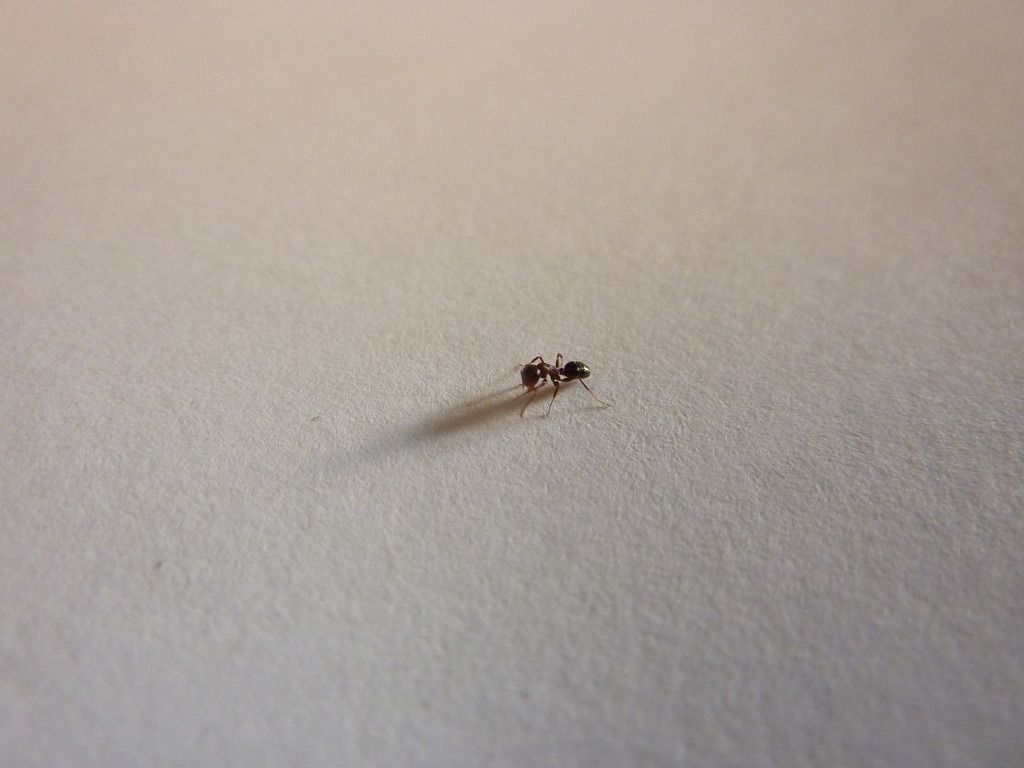
Worker Two
1. Location of collection: Horsham, PA: Suburb of Greater Philadelphia.
2. Date of collection: May 16, 2017.
3. Habitat of collection: Caught foraging around the base of a (presumably) dead tree.
4. Length (from head to gaster): Approximately 2.6-3.1 mm.
5. Color, hue, pattern and texture: Black, shiny head, mesosoma, and gaster. Legs seem to be orange/yellow in hue.
6. Distinguishing characteristics: Post-petiole Present
7. Distinguishing behavior: Moves slowly and steadily, does not exhibit fast, jerky or sporadic movements. Did not seem to be in direct vicinity or interacting with other workers of the same species, although others were present.
8. Nest description: Presumably beneath bark on tree.
Notes: When we noticed the worker at first, my brother and I briefly decided she was a Monomorium species, due to her shiny black hue and relatively small size. Upon further investigation, we've been considering Temonothorax longispinosus. I know Nathant1234 published an identification thread showcasing a potential T. longispinosus worker. It may (or may not) help to know that there are many, thriving T. ambiguus and T. curvispinosus colonies in the same general area as these workers were seen foraging.
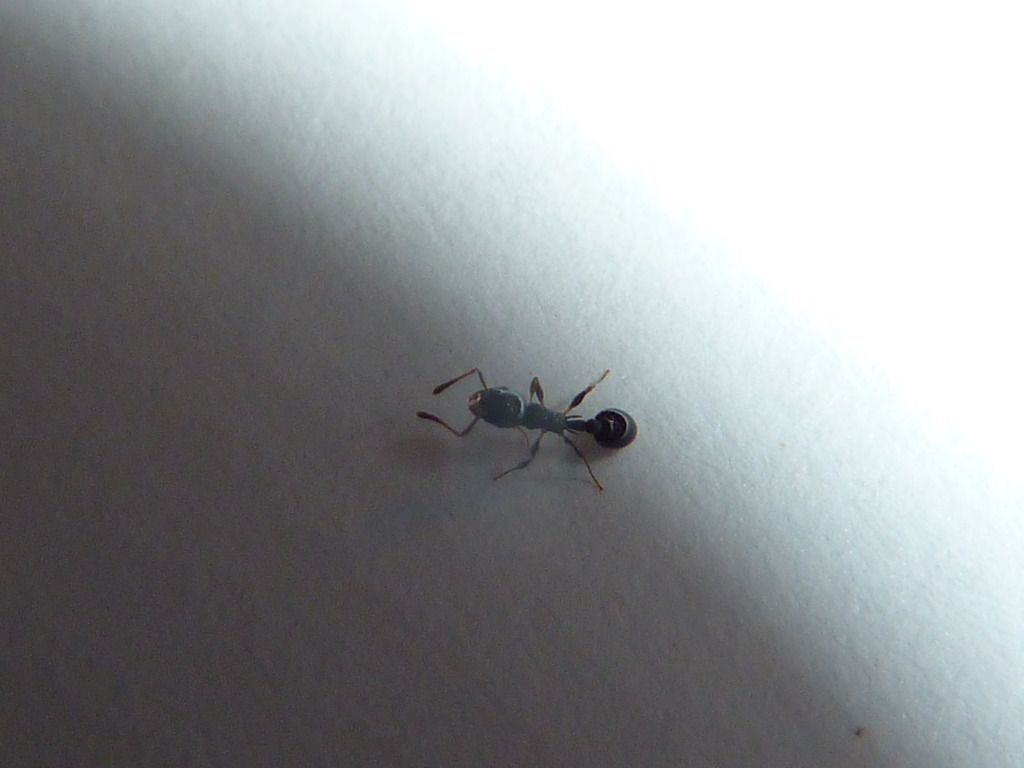
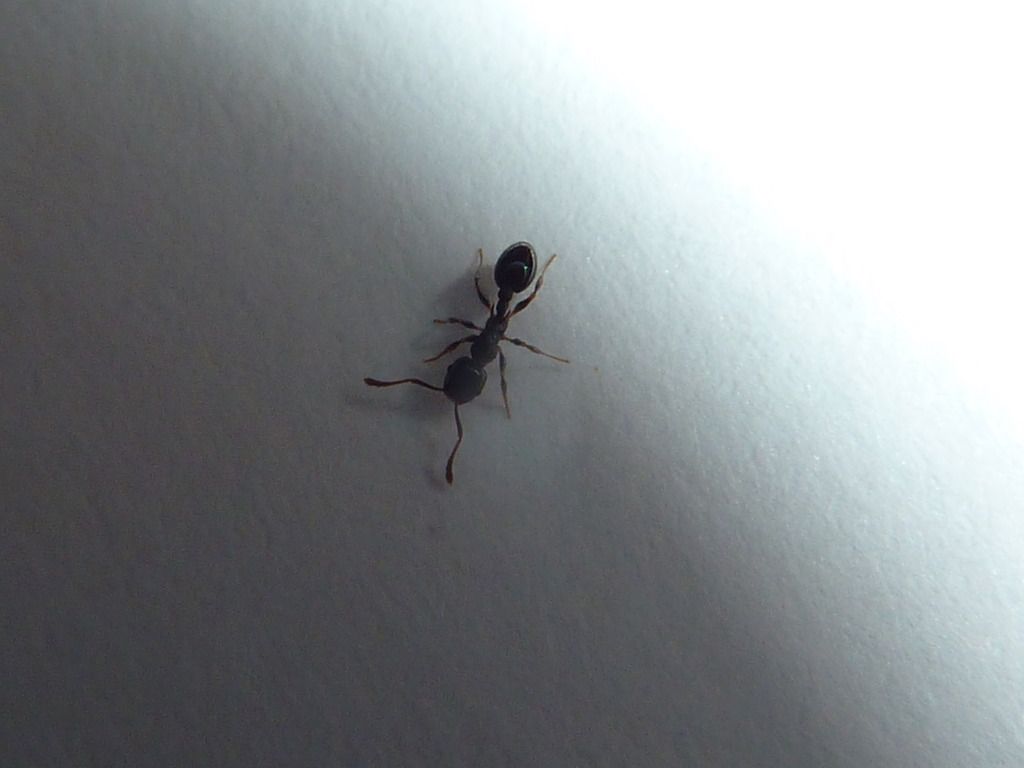

I know I say this every time, but I sincerely apologize for the quality of the photography; I'm still working on it!







